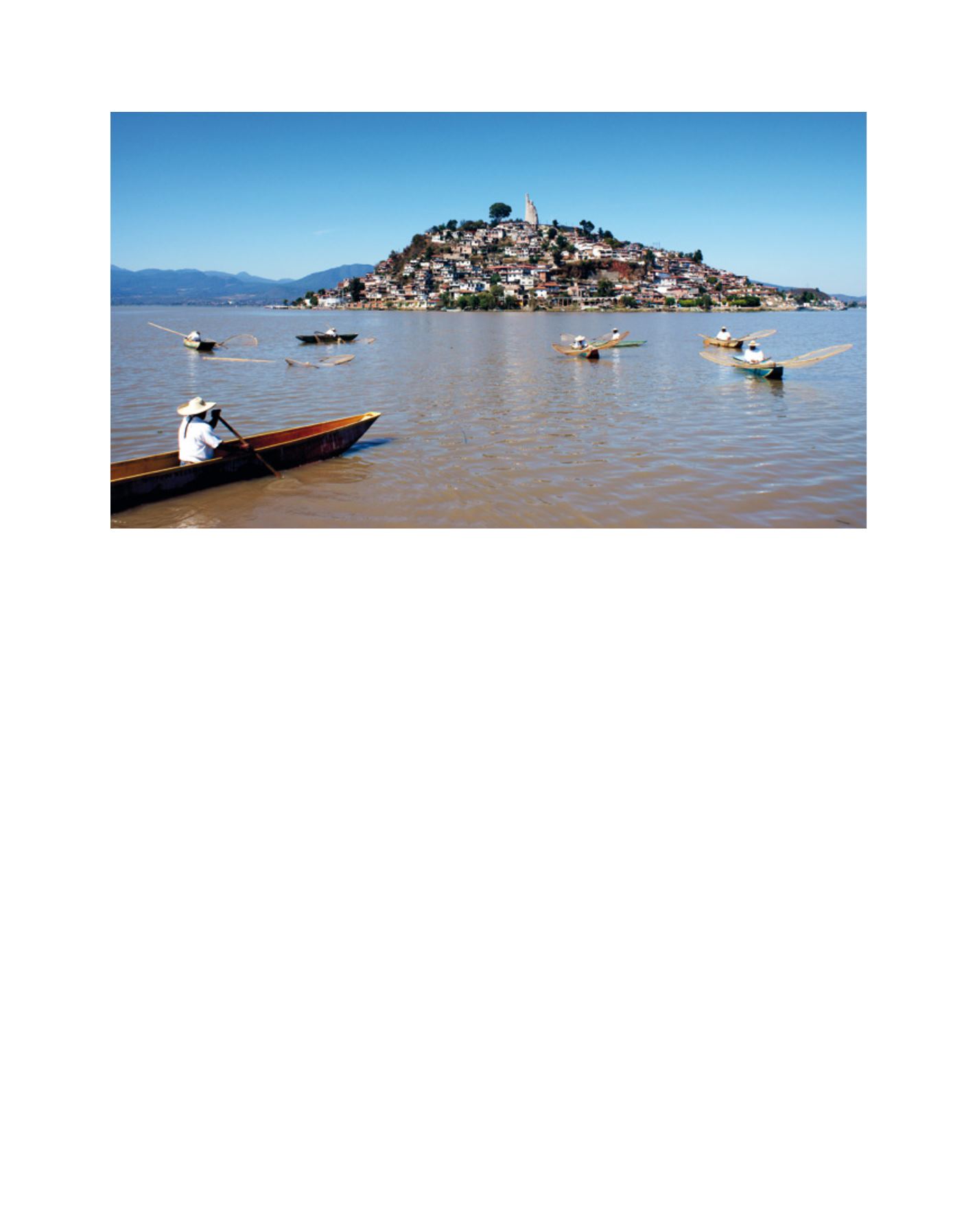

[
] 232
W
ater
C
ooperation
, S
ustainability
and
P
overty
E
radication
shed). In the same period, sewerage services went from
83 per cent to 90 per cent. The water quality index of
the lake went from 54.5 in 2003 to 62.9 in 2011, which
means that today, the current water quality of the lake
is adequate for fishing activities. Fish production went
from 50 tons in 2003 to 155 tons in 2011. The number
of inhabitants with water supply services went from
1,500 in 2005 to 9,115 in 2011 and those with basic
sanitation rose from 2,000 in 2005 to 6,135 in 2011.
The number of poverty-stricken inhabitants with self-
consumption food production systems went from 750
in 2005 to 5,580 in 2011.
What has been briefly described here represents only a
few examples of the many and diverse actions that have
been taken to transform this watershed for the benefit of
all its inhabitants. This transformation has been possible
thanks to the cooperation of federal, state and municipal
government authorities; of federal agencies such as the
National Water Commission and the Mexican Institute of
Water Technology; of private organizations and NGOs,
most notably the Gonzalo Río Arronte Foundation; of
local schools and academic institutions; and last, but
certainly not least, of the inhabitants of the lakeside
communities, who with good will and enthusiasm have
collaborated to make this programme a success. The
achievements attained by this programme testify to
the fact that social and inter-institutional cooperation,
following a multidisciplinary methodology, constitutes
the best strategy for reverting environmental deteriora-
tion, and demonstrates that tackling water issues with an
integrated watershed approach is the best way to solve
the socioenvironmental problems of a given region.
Fishing activities thrive again in Lake Pátzcuaro, with the famous island of Janitzio in the background
Image: Roberto Menéndez, IMTA
Regarding fish production and species protection, the breeding of
white fish (
Chirostoma estor estor
) and the Pátzcuaro Chub (
Algansea
lacustris
) has been developed in the township of Urandén de Morelos
in the municipality of Pátzcuaro. Thus, more than 15.1 million fish
were bred and released into the lake between 2003 and 2011. Amodule
with four ponds was built for breeding white fish in the community of
Ichupio and 26 fishing organizations were supported with the provision
of 735 nets for fishing carp. This activity, together with programmes for
improving fishing practices, the removal of aquatic weeds and silt, and
the rehabilitation and conservation of navigable canals and reproduc-
tion areas, has enabled a significant improvement in the conditions and
capacity for fish production in Lake Pátzcuaro.
The Lake Pátzcuaro watershed has been equipped with 11 weather
stations: five digital pluviometers and six complete climatological
stations that measure variables such as precipitation, temperature,
relative humidity, solar radiation, and wind direction and veloc-
ity. As for land use, there was an increase in agricultural land and
in urban areas, mainly in the subwatersheds of Pátzcuaro and
Tzurumútaro compared to 2008. One of the main variables of the
water balance is evapotranspiration, which decreased in four subwa-
tersheds, while surface run-off increased in Ajuno, San Jerónimo
and Erongarícuaro.
Thanks to the efforts and results associated with more than 250
specific actions and projects, it can be proudly said that there has
been a series of tangible benefits for the watershed and its inhabitants.
While the results obtained so far are very encouraging, it is impor-
tant to give continuity to and reinforce the actions foreseen in the
programme. In this regard, it is worth mentioning the battery of
indicators that have been adopted to follow up the rehabilitation
of the watershed. For instance, from 2003 to 2011, treated waste-
water flows went from 52 l/s to 172.5 l/s (23 per cent and 78 per
cent respectively, from the total wastewater generated in the water-


















